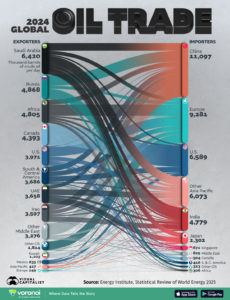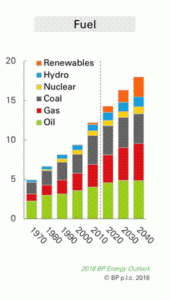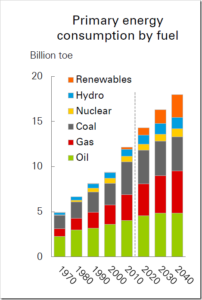by D. Neufeld, Aug 20, 2025 in VisualCapitalist

Global Crude Oil Trade Flows in 2024
This was originally posted on our Voronoi app. Download the app for free on iOS or Android and discover incredible data-driven charts from a variety of trusted sources.
Key Takeaways
- China imported 11.1 million barrels of crude oil per day in 2024, with Russia standing as its largest supplier of oil.
- Meanwhile, the U.S. imported 6.6 million barrels per day (mb/d), with Canada accounting for 62% of the total.
In 2024, global oil trade patterns continued to evolve, shaped by geopolitics and changing regional demand.
From Asia to the Middle East and the Americas, oil remains a cornerstone of the global economy. The vast scale of daily trade underscores not only the world’s reliance on energy but also intricate, global alliances.
This infographic shows the largest crude oil importers and exporters by daily volume, based on data from the Energy Institute.
China Leads in Global Oil Imports
Below, we show daily oil import and export volumes for major global players:






